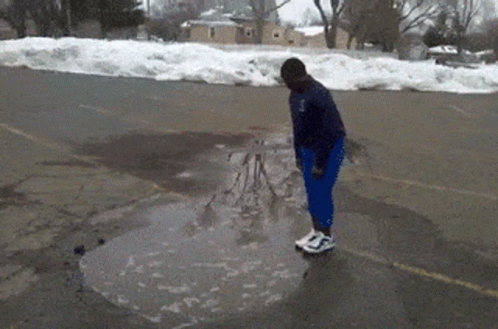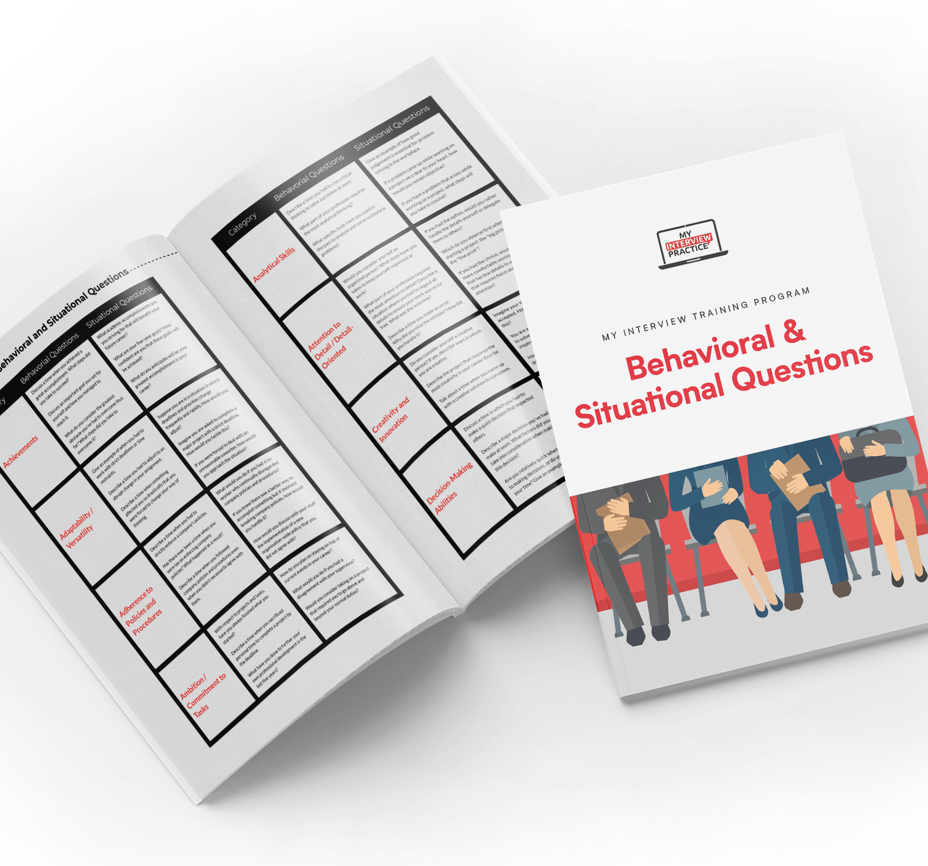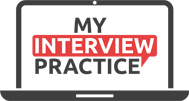What to Do After An Interview: Following Up and Next Steps

You’ve just wrapped up the interview. Your talking points are still echoing in your mind, your shoes are finally off, and the adrenaline is giving way to questions. Now what? Should you wait to hear back? Send an email? Start prepping for a second interview, or for other job opportunities?
Contrary to popular belief, your work isn’t done the moment the interview ends. In fact, what you do after an interview can be just as important as how you performed during it. The post-interview phase is a key part of the hiring process, and it offers a window to demonstrate professionalism, enthusiasm, and self-awareness. For many candidates, this stage is where momentum is either maintained, or lost.
Following up the right way can keep you top of mind, reinforce that you’re a good fit for the role, and set you apart from other candidates still in the running. Let’s walk through exactly what to do after an interview, with tips on timing, communication, and how to stay prepared for whatever comes next.
Immediate Actions – The First 24 Hours
The hours immediately following a job interview are critical, but often underused. In this window, you have a unique opportunity to show continued interest, reinforce your value, and keep the momentum going. Here’s what to prioritize within the first 24 hours.
Send a Thank-You Email
Sending a thank-you email within one day of your interview is a professional signal that you’re still engaged and excited about the opportunity. A well-written message gives you a second chance to make an impression and ensures you stay on the hiring manager’s radar during the evaluation period.
Your email should:
- Express appreciation for the interviewer’s time
- Reiterate your interest in the position
- Reference something specific from the conversation (e.g., a project, challenge, or shared value)
- Offer to provide any additional information
A thank-you email doesn’t need to be long to be impactful. Clarity and sincerity matter more than length. Sending one to each person you met with, tailored slightly to reflect your conversation, shows attention to detail and professionalism.
Take Time to Reflect and Self-Assess
Once you’ve hit send, shift your focus inward. What moments from the interview stood out? Were there further questions you struggled with? Did you mention the experience or project most relevant to the job description?
Take 10–15 minutes to jot down what went well and what you might improve for future interviews. This kind of reflection helps you grow and gives you useful context if you get invited back for a second interview, or need to clarify anything in a follow-up.
Don’t let the quiet after the conversation lull you into inaction. By combining gratitude with thoughtful self-assessment, you’ll move forward with intention, and be better positioned for whatever comes next.
The Waiting Period – 3 to 7 Days After the Interview
After the initial 24 hours, it’s time to shift from immediate follow-up to strategic patience. This part of the interview process can be the most nerve-wracking: you’ve done everything right, but you haven’t heard back yet. The key here is to stay proactive, without being overbearing.
Track the Timeline (and Stick to It)
Start by reviewing what the interviewer mentioned about next steps. If they gave a time frame—like “We’ll be in touch by the end of next week”—take that at face value. Mark the date on your calendar and hold off on any follow-up until that point has passed.
If no timeline was discussed, it’s generally acceptable to follow up about a week after your interview. Waiting at least 5–7 business days gives the hiring manager time to complete other interviews and internal discussions without feeling rushed or pressured by your outreach.
Being mindful of timing shows emotional intelligence. That’s an increasingly important soft skill in today’s hiring landscape.
Craft a Follow-Up Email That Adds Value
If the timeline has passed and you haven’t heard anything, it’s perfectly appropriate to send a short, respectful follow-up. Your message should:
- Mention the position title
- Reaffirm your interest in the company
- Reference something specific you enjoyed discussing
- Politely ask if there’s been any update or if you can provide further information
This is all about reinforcing that you’re still interested and available. Keep it brief, warm, and professional. Avoid sounding impatient or pushy.
Pro tip: If you had strong rapport with one interviewer over others, direct your message to them. It’s more personal and can yield a faster response.
By staying thoughtful and measured, you remain an active part of the hiring conversation, without tipping into “too much” territory.
Beyond One Week – Staying Present Without Pushing
If more than a week has passed and you still haven’t heard back—even after a thank-you note and a polite follow-up email—it’s natural to feel unsure about your next move. While this stretch can test your patience, it’s also an opportunity to show professionalism and persistence without crossing the line.
Make a Phone Call (If Appropriate)
If the role is one you’re highly invested in, and it’s been 10–14 days with no response, a quick phone call may be warranted—especially if the interviewer previously mentioned a specific date that has passed.
If you decide to call, keep your message short and respectful. Whether you speak to someone directly or leave a voicemail, be sure to:
- State your name and the role you interviewed for
- Express continued interest in the position
- Ask if there have been any updates and thank them for their time
If you’re leaving a voicemail, speak clearly and keep it under 30 seconds. You want to sound confident, not frantic.
Engage Professionally on LinkedIn
Staying visible doesn’t always require direct outreach. Subtle engagement through your LinkedIn profile can help you remain present in the potential employer’s mind without being overbearing.
Ways to do this:
- Like or comment on a recent post from the company or team you interviewed with
- Share an article relevant to the position or industry
- Tag the company or mention something you appreciated about the interview (if appropriate)
This form of passive follow-up keeps you visible, reinforces your interest, and can even spark continued conversation if the hiring manager happens to engage with your post.
Just remember: everything you do throughout the interview process still speaks to your professionalism. Thoughtful touches and small signals of interest can go a long way.
Common Pitfalls to Avoid

via Tenor
The post-interview period is full of unknowns, which makes it easy to overstep without realizing it. While following up is important, doing it the wrong way can unintentionally hurt your chances. Here are the most common mistakes candidates make after a job interview, and how to avoid them.
Following Up Too Often
Persistence is good. Pestering is not. Sending multiple emails or calling repeatedly within a short window can backfire, making you seem impatient or difficult to work with. As a rule of thumb: one thank-you email, one follow-up a week later, and possibly a phone call after two weeks is usually enough.
Sending Generic Messages
A templated message that could be sent to any company won’t cut it. If your follow-up sounds like a copy-paste job, it’s likely to be ignored. Instead, mention something specific from the conversation, like a challenge the team is facing or a project the role would touch. Personalized follow-ups are always more impactful.
Ignoring the Timeline
If the interviewer told you they’d follow up in 10 days, don’t reach out after 3. Respecting the time frame shows you’re paying attention and understand professional boundaries.
Not Following Up At All
Surprisingly, many candidates never send a thank-you note or follow-up message. This silence can be misinterpreted as a lack of interest or professionalism. A short note can make a big difference—and it’s one of the simplest ways to stand out from other candidates.
Special Circumstances: Group Interviews and More
Not every interview is a one-on-one conversation with a single hiring manager. Sometimes you’ll meet with a panel, multiple team members in a series of interviews, or a mix of HR and department leads. How you follow up in these scenarios can make a lasting impression—or fall flat if you’re not intentional.
Following Up After a Group or Panel Interview
If you met with multiple people during the interview, your follow-up should reflect that. Rather than sending one generic message to the group, aim to thank each person individually. Even if it’s a brief note, tailoring your message based on your specific interaction with each person shows respect and attention to detail.
Can’t remember everyone’s name or email? Reach out to your main point of contact (typically the recruiter or hiring manager) and politely ask for that information. It’s a completely reasonable request, and most companies are happy to help.
What to Do If You Don’t Get the Job

via Tenor
Receiving a “We’ve chosen another candidate” email is disheartening, but it’s not the end of the road. Fight the urge to hit “archive,” and instead, take a deep breath, then consider crafting a courteous email requesting feedback. Their insights can be golden nuggets that help you refine your interviewing skills for future opportunities, and your professionalism in handling rejection will leave a lasting impression and can make you a strong candidate for future roles within the company. While you shouldn’t be too forward, it’s perfectly acceptable to express your interest in future roles that align with your skills and experience.
From the initial thank-you email to more advanced maneuvers like snail-mail notes and strategic LinkedIn engagements, following up is not just good manners—it’s a survival skill in the job-hunting jungle. Done right, it’s your stealthy nudge to the employer saying, “Hey, remember me? I’m awesome, and I want to be part of your tribe.”
To ensure you’re making the most out of every opportunity, don’t forget to leverage tools like MyInterviewPractice. Our platform allows you to simulate realistic job interviews and receive constructive feedback, ensuring you’re fully prepared for both the interview and the all-important follow-up. Your dream job is just a few clicks—and a great follow-up—away. Good luck!
FAQs
How long should I wait before following up?
Aim for a thank-you email within 24 hours. If the company has provided a timeline, adhere to it. Otherwise, a polite follow-up email after a week is generally acceptable.
Should I follow up again if I still haven’t heard back?
Yes, but give it some time. If another week or two passes without news, a gentle reminder or even a follow-up call might be appropriate.
Is it appropriate to ask for feedback if I’m not selected?
Absolutely! As long as your request is courteous and professional, many employers will appreciate your eagerness to improve.
How many times is it acceptable to follow up?
There’s no one-size-fits-all answer, but two to three times over a month is usually a reasonable ballpark. Beyond that, you risk crossing the line into pest territory.
The key to nailing your interview – practice, practice, practice.
As with anything, practice makes perfect. The most common ways to practice are with in-person mock interviews or a list of questions. While these options are a great place to start, they can leave a lot to be desired.
Practicing with In-Person Mock Interviews and Question Lists
One way to get valuable interview practice is to set up in-person mock interviews. Unfortunately, they can be somewhat inconvenient. You have to find someone to conduct the mock interview, and schedule a meeting every time you want to practice.
Question lists offer a much more convenient way to practice interviewing. Unfortunately, they do little to recreate actual interview pressure. In a real interview you’ll never know what’s going to be asked and this is exactly what can make interviews so stressful.
Interview Simulators – The best of both worlds.
With interview simulators, you can take realistic mock interviews on your own, from anywhere.
My Interview Practice offers a dynamic simulator that generates unique questions every time you practice, ensuring you're always prepared for the unexpected. Our AI-powered system can create tailored interviews for any job title or position. Simply upload your resume and a job description, and you'll receive custom-curated questions relevant to your specific role and industry. Each question is crafted based on real-world professional insights, providing an authentic interview experience. Practice as many times as you need to build your confidence and ace your next interview.
| List of Questions |
In-Person Mock Interview |
My Interview Practice Simulator |
|
|---|---|---|---|
| Questions Unknown Like Real Interviews | |||
| Curated Questions Chosen Just for You | |||
| No Research Required | |||
| Share Your Practice Interview | |||
| Do It Yourself | |||
| Go At Your Own Pace | |||
| Approachable |
Our interview simulator uses video to record your responses, and recreates the pressure you would feel in a real interview. This also allows your to see how you perform and perfect your responses. You can then share your responses with colleagues and mentors so that you can get valuable feedback.
Get the free training guide.
See the most common questions in every category assessed by employers and be ready for anything.
Get the Guide



